The Best Tabletops For A Standing Desk
Like most reviews sites, our editorial staff and laboratory testing expenses are partially offset by earning small commissions (at no cost to you) when you purchase something through those links. Learn More

MDF, Powdercoat, Laminate, 3D-Laminate, Reclaimed Wood, Hardwood, Veneer, Plywood — What Do They All Mean?
For the most part we at WorkWhileWalking review active office furniture like standing desks and treadmill desks, but when it comes to the subject of desktops and tabletops, the information in this primer, and the reviews round-ups below, actually apply to all desks and tables, adjustable-height or fixed-height.
Whatever you’re shopping for a standalone top for, this summary of all the different kinds of top materials available should be equally useful to you, because unless you were an office furniture salesperson in a previous life, many of these terms may be alien to you.
We asked our review staff experts, who have been lab-testing sit-stand desks and tables for many years, to create this guide to help you wade through all the terminology, explain how different desk tops are manufactured, the pros and cons of each type, and the price range you should expect.
To keep all this information better organized, we divided this content into two major categories, Laminated Desk Tops and Solid Wood Desk Tops, which themselves each contain several subcategories. Laminated desk tops generally have an MDF core wrapped with a hard or flexible laminate (or even paint), whereas the entirety of a solid wood top is made from edge-glued planks of real wood, with the natural grain shining through.
After the primer on all the different types of desk top and table top materials is our round-up of links to individual reviews we’ve conducted of the most popular online sellers of standalone tops. Note that this is now one of the most rapidly growing categories of reviews on WorkWhileWalking, due primarily to the fact that many of the popular standing desk manufacturers are now offering their tops for sale standalone, usually for existing customers to replace a defective or damaged top, or to upgrade to the ideal size and color for a new workspace they’ve moved into.
While we realize there are also retail outlets for counter tops and tabletops, such as Home Depot, Lowes and IKEA, these outlets tend to have very limited selections and, at least since the pandemic began, have frustrated many customers with out-of-stock conditions on many of their products. The vendors we’ve reviewed here specialize in making tabletops for standing desks, conference tables and other furniture items, and tend to have a more consistent availability.
If you’re looking for something of a more artisanal nature you might also want to shop around a bit for tabletops on Etsy. Of course you can also find oodles of tabletops on Amazon, though beware that almost all of these are sourced from China and are generally of relatively poor product quality. We’ve reviewed many of the most popular desk tops sold on Amazon in our round-up below.
To stay abreast of all the latest reviews published each month please sign up for our free newsletter.
Laminated Desk Tops
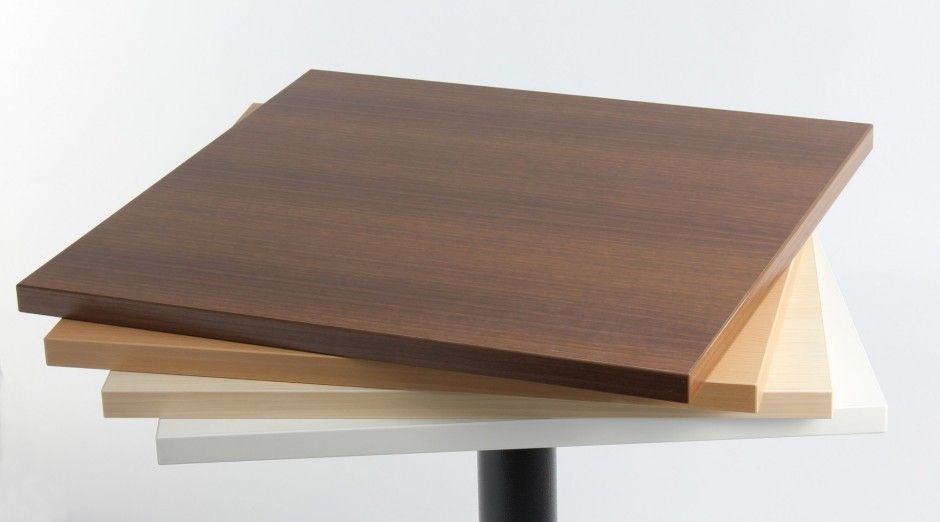
Lamination sounds like a fancy term, but the idea is really quite simple. Lamination is the technique of manufacturing a material in multiple layers, so that the finished product (in this case a tabletop) is aesthetically appealing, and also attains strength, durability or other properties from the use of differing materials. Laminates span from vinyl wraps and natural wood veneers to melamine or even metal.
Laminates are bonded to “substrates” (usually a wood product in the case of tabletops) using adhesives, pressure and temperature. It’s the same idea behind a laminated menu at a restaurant—the clear plastic laminate provides rigidity, durability and moisture protection for the paper menu.
In the case of desk tops used in standing desks, the substrate is usually a Medium Density Fiberboard, colloquially known as MDF. There’s cheap MDF and expensive MDF, depending on the grade. As a rule of thumb, the heavier the board the, more wood fiber it has in it, hence why cheaply laminated tabletops sourced from China can weigh a fraction of how high-quality American-made tabletops will tilt the scales.
MDF is made by recycling scrap wood, grinding it down to uniform particles, adding a resin and other chemicals to bind everything together, and then pressing it into a very strong and uniform piece of wood under high temperature and pressure. It has some really great qualities, starting with the fact that it’s made from recycled wood, and is much, much cheaper than a solid plank of natural wood.
The uniformity of MDF planks makes it isotropic, meaning that it has the same properties in all directions as a result of having no grain, and no knots. It is easy to shape and bond laminates to the surface. Once fully-laminated, MDF doesn’t contract or expand with temperature like natural wood can. Depending on the grade of the MDF used and what material is laminated to it, a particular maker’s desk tops can be stronger and more durable than others that sound virtually the same in a website description.
MDF is so stable that it can even be painted, albeit it cannot be stained like natural wood. And that brings us to its one primary weakness, which is that it’s extremely susceptible to moisture damage if not hermetically sealed. Tops that have grommet holes with exposed MDF can be utterly destroyed with one accidental spill of a coffee cup.
Mind you there are ways to protect exposed portions of MDF using waterproof paints or 3D laminates (see below), but this is something to be aware of when shopping for a laminated MDF tabletop—they’re not all made to the same quality standards, and only the very highest quality ones will be hermetically sealed. How can you tell? They’re the ones with the five year warranties. Most table tops come with no warranty at all because they’re so easy to damage.
Is MDF The Same Thing as Particleboard?
While MDF and particleboard are sometimes used interchangeably, they are different products with different strengths and weaknesses. MDF is made of very small wood fibers, while particleboard is made of bigger, coarser fibers. So what does that mean for the final product?
Particleboard is weaker and less durable than MDF, while also being very susceptible to moisture damage. It doesn’t hold nails or screws as well as MDF. While particleboard is cheaper and lighter than MDF, it’s a lesser product in almost every other way for tabletops.
What is a Powder Coated Desk Top?
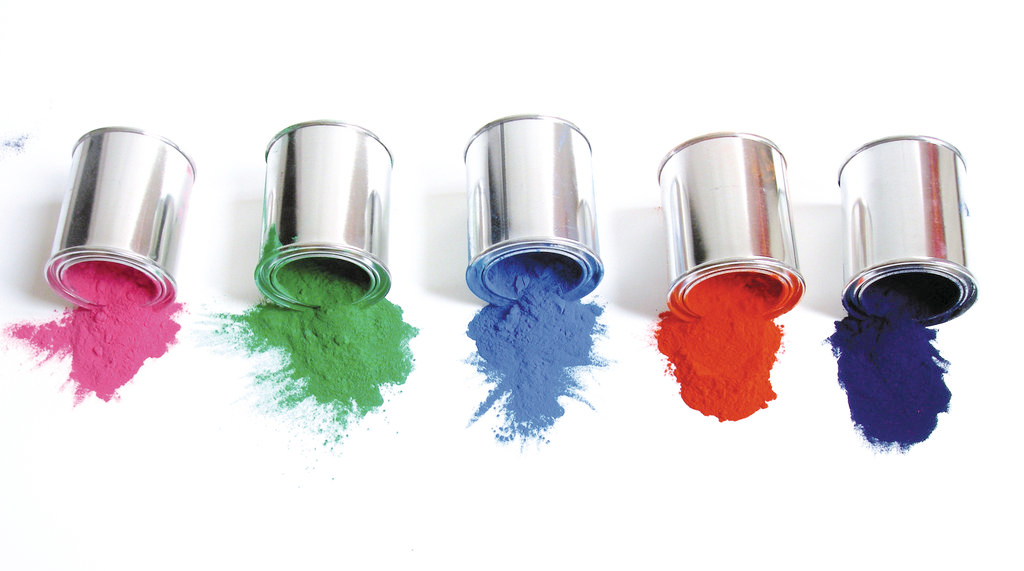
The very cheapest way to laminate a piece of MDF is to use the powder coating method, which is literally spray-painting the wood. Powder-coated tops are highly-susceptible to damage because they add little or no protection from scratches, dents, or cleaning chemicals. In fact, many standing desk buyers have been shocked to find the paint coming off their tabletops from spilled cola drinks or from using a strong cleaning chemical. Anything more than wiping with a damp cloth can literally strip the paint right off of a cheaply-made powder-coated top.
There are some higher-quality ones on the market with a moisture protecting seal but these add a bare minimum of hardness to the underlying MDF; the tops are still easily scratched and dented as compared to HPL and other superior materials.
Another drawback of powder coating is that it can only be used for solid colors. You won’t find a maple, cherry, or mahogany in a powder coat finish, for obvious reasons. But it is dirt cheap.
What is High Pressure Laminate (HPL)?
HPL is the next step up from powder-coating a desk top, and has been around for generations. The vast majority of office furniture is built with HPL surfaces, made by bonding a laminate such as melamine (basically a plastic compound, commonly found on the inside of kitchen cabinetry, e.g. Formica or Wilsonart) to the top and bottom of a rectangular plank of MDF. Sometimes this is combined with high temperature to help the adhesives firmly bond the laminate to the substrate, in which case it is often referred to as Thermally Fused Laminate, or TFL.
The second part of manufacturing an HPL tabletop is gluing some sort of edge banding to all four edges of the plank. Edge banding comes in many varieties, but you’ve surely seen it commonly as color-matched PVC strips (a plastic or rubber feel) that are glued to the thin edges of the tabletop. One problem with edge banding is that it often shows visible seams, that not only make the top look simple and cheap but the glue usually dries out over time, leaving strips of edge banding peeling off at the corners. Any seams that are exposed to air, liquid, cleaners, etc., will eventually deteriorate.

Sometimes edge banding is a rubber strip wrapped completely around the tabletop with one seam in the center of the back edge. This allows for corners to be rounded, and to lessen bruising from running into the desk with your hip, but still leaves a 90-degree edge everywhere else.
In germ-sensitive areas like medical offices, the exposed seams of glue can also accumulate bacteria, and the glue can be compromised by harsh cleaning chemicals. For standing desks, where people often lean against the front edge of their desk, HPL tops are famous for leaving a reddish line in your forearm where they leaned against it. So those are the cons.
The pros are that HPL is very widely manufactured, including in China and Europe, and is very cost effective. It may not be the prettiest, most durable or most ergonomic, but it is cheap.
Note: so-called “whiteboard laminate” is usually about the same price as HPL and made the same way. Just watch your shirtsleeves!
What is 3D Lamination?

Of all the materials that you could choose for a desk top or table top, the most durable, and the most visually stunning if your budget doesn’t include real solid wood, is 3D laminate. But there are definitely “premium grade” and “commodity grade” 3D laminates out there, so it’s important to know the difference.
Technically, a 3D laminate is a sheet of plastic or vinyl that is softened with heat and then wrapped around a pre-shaped plank of MDF wood. In between the laminate sheet and the MDF core is a special adhesive that is also activated by heat. Sometimes termed “ergo-contoured,” these tops usually feature rounded corners, radiused edges and other features that you can’t get with the simple rectangle of an HPL top. (Necessary features, in fact, because 3D laminate can’t wrap around sharp 90° corners.) The softer edges aren’t just a lot easier on the body, they tend to get less dinged up by chair backs banging into the desk.
There are huge variations in quality and technology when it comes to 3D lamination. There are differences in surface textures, image quality (i.e. a wood grain image), scratch resistance, dent resistance, resistance to various cleaning chemicals, resistance to color fading from sunlight, and other measures of durability. And huge differences in the investment in equipment and worker experience required to make them.
The first distinguishing clue in discriminating between premium and commodity grade lamination is the cost, naturally.

Another clue is whether you see exposed MDF in the grommet holes. With commodity-grade tops the holes are cut out after lamination, leaving the completely exposed to liquid spills that would instantly warp the wood and destroy the top. In fact the only way to hermetically seal out any moisture from attacking the integrity of the MDF core is to wrap 3D-laminate all the way through the grommet holes. This is something you’ll only see in premium-grade 3D produced by American manufacturers.
Premium 3D laminate requires a much more sophisticated manufacturing process, machinery that can run up to as much as $1M, higher-grade laminate stocks, more advanced adhesives, and highly experienced workers. The process adds pressure, not just temperature, in the lamination process. Using water-catalyst adhesives and high vacuum pressure literally bonds the laminate to the wood at the molecular level, creating that all-important hermetic seal. (See iMovR’s video of how they make their 3D-laminated tops in an automated process that requires 15,000 sq. ft. of equipment.)
So one easy way to tell the difference between commodity-grade and premium-grade 3D lamination is to attempt to peel off the laminate from any exposed edge. With a premium laminate (see our deep dive review to learn what iMovR uses exclusively in their desk tops) you could take a sledge hammer to the corner of a desktop and you still won’t be able to grab an edge of the laminate and peel it off. We’ve tested commodity grade desk tops in the lab, pretty much always made in China, where we didn’t even have to try to grab an edge to peel off the laminate, the review sample arrived with the laminate already peeling off (e.g. the Luxor standing desk).
The best 3D laminations are designed specifically for office desk tops, commonly known as “HD” laminates (for Horizontal Dimension). These are literally two-ply vinyl films—a second, clear laminate is bonded to the top of the primary vinyl film that holds the color image, to add extra hardness and durability to the desk top surface. “VD,” or “Vertical Dimension” 3D laminates are single-ply and used on vertical cabinetry such as in kitchens and bathrooms. If you were to sign your name on a piece of paper held up to a VD-laminated cabinet door, for example, you’ll likely leave a permanent impression of your signature in the wood.
The very best 3D laminates for standing desks are obviously “HD,” and the best of those are Surf(x) or equivalent brands that were originally developed for the healthcare marketplace. Well-known 3D laminate manufacturers include Omnova and American Renolit. These are harder, more durable, and definitely more attractive than other traditional finishes, but only very slightly more expensive than HPL, if not equally-priced. They also come in hundreds of colors, including specialty colors like Corten metal, carbon fiber, and even remarkably simulated marble and granite. There are even textured finishes that use a technology called EIR (Embossed-In-Register) to create ridges in faux reclaimed wood, for example.
How can 3D laminate be so much better than HPL yet cost nearly the same? While high-quality 3D laminate material costs more per-square-foot than hard laminate sheeting (e.g. melamine or Formica), there is less labor involved since there’s no second process for edge banding, and in general the process is much more highly automated (see video). The end consumer price turns out to be about the same, at least if you’re comparing American-made to American-made.

Another consideration in terms of long-term cost of ownership is that the warranties on premium grade 3D-lamiante are unparalleled. Whereas most HPL tops come with no warranty coverage, or at most five years, iMovR puts 15 years on their 3D desk tops. Furthermore, most every other desk top warranty has a carve out for the customer “using improper cleaning chemicals,” iMovR promotes their healthcare-grade, food-grade tops as being safe to clean with even the harshest of hospital disinfectants.
The reason that few standing desk manufacturers offer “HD” 3D is that there are very few factories in the world that can afford the massive investment and square footage required to install the equipment, and stock large numbers of laminate rolls; HD 3D lamination capability is certainly not something you’ll easily find in China, or even Europe. In the US, the only standing desk manufacturer that utilizes this top-end 3D laminate is still iMovR, and it’s why they can offer thousands of different color/size/shape combos on their desks—since every desk is made to order on an automated 3D-lamination line. These can now also be purchased standalone, without a base, for owners of other desk brands that want to replace a failed desktop with a higher quality one, or simply change size and/or color.
Solid Wood Tabletops

For the discriminating buyer there is simply no substitute for real wood. If they’re used to sitting at a real wood desk then they’re apt to search for real wood when buying a standing desk, too. So in recent years we’ve seen more and more real wood options being offered by standing desk manufacturers, and their popularity has been on a steep rise. These are pricey options that can run up to $2000 or more in exotic species, and often involve long lead times, for sure. Because of their high raw material costs real wood tops are typically not stocked in as many sizes and shapes as other options like HPL or 3D-laminated. That said, makers like iMovR that are “pull based” do offer an astounding array of colors and sizes, you just have to wait 3 – 6 weeks for production.
Depending on how much lacquer or other sealants are used to protect the top they may not be as durable, either, but they can always be refinished if they start looking too battered, whereas you can’t refinish worn 3D laminate or HPL. Most people seeking real wood tops just accept the fact that their desks will “retain character” as they get a little dinged up over the years. Refinishing is a very involved and costly affair, generally speaking. This is where craftsmanship and production quality can really make a difference, and as a rule of thumb, the higher the cost the better and longer it is likely to last.
Below you’ll find general information to help you navigate the differences between different makers’ real wood options, but be sure to check out our comprehensive round-up of Solid Wood Standing Desk Reviews to learn about specific real wood offerings that are available in the market today. Note that “reclaimed wood,” while technically a solid wood product, involves even more careful considerations when it comes to separating poor quality from top quality. See our comprehensive round-up of Reclaimed Wood Standing Desk Reviews for all the knowledge you’ll need to make a well-informed buying decision. While some vendors continue to offer it on their standing desks, Fully, the progenitor of this category in the standing desk industry, has finally called it quits due to high failure rates and warranty claims.
What is Natural Wood vs. Hardwood?
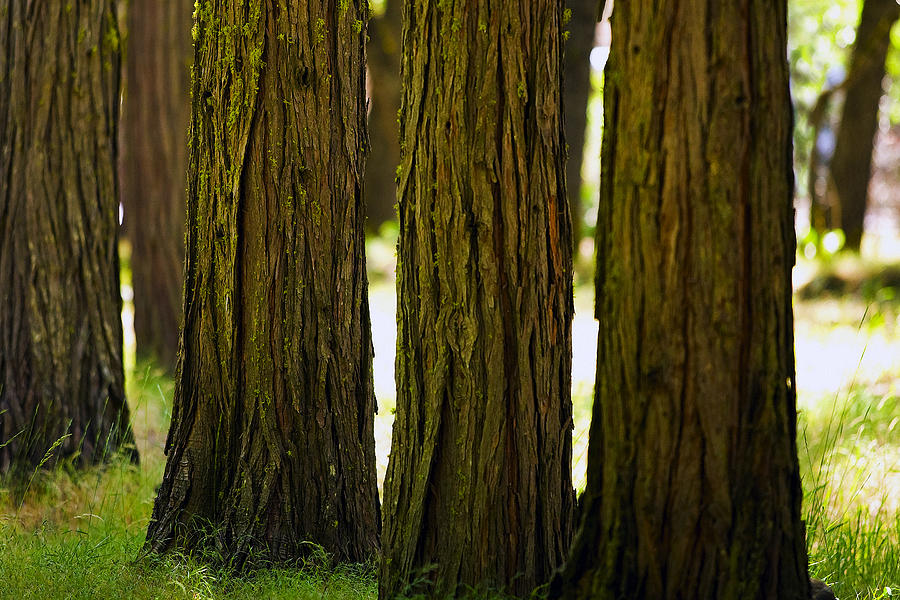
There’s a lot of confusion on this point as people tend to use the term hardwood as a synonym for solid natural wood, but there is a technical difference. Hardwood is specifically from dicot trees. These are usually found in broad-leaved temperate and tropical forests. In temperate and boreal latitudes they are mostly deciduous, but in tropics and subtropics, they are mostly evergreen. Learn more about how hardwood differs from softwood.
Regardless of whether a hardwood or a softwood, of paramount importance to any buyer of this kind of product should be knowing everything about how it is made. Whether the species is one that is highly sustainable or being harvested in excess of its new growth rate. Where it comes from, and the process it goes through from raw material to a finished, sealed, precision-machined tabletop.
What Are the Key Differences Between American-sourced and Imported Solid Wood Tabletops?
The more exotic-sounding and inexpensive a tabletop is the more likely it is to come from outside the USA, where environmental standards are far lower and sustainability is sacrificed for short-term profits. Highly sustainable stocks grown in the USA include maple, cherry, walnut, hickory, red oak and white oak, for example. Then there’s the question of the chemicals used to seal the wood after it has been sanded, and in some cases stained.
Cheaper solid wood products, especially imported ones, tend to use sealants that rely on solvents. These are toxic to the workers, to the environment, and ultimately to all of us. As with most product categories you’re usually best-off with USA-grown and USA-made real wood products, but be sure to ask the producer about how your top will be made. Not sure if a species is grown in the USA? Just google “where is [species] grown,” the answer usually comes right up. If it is grown Asia, Africa, South America or elsewhere you can bet it will not be of the same quality as a USA-made top, and likely harmful to the environment. Another clue is to look for “American” in the species name. “Natural Ash,” for example, is likely not “American Ash”—and may have different grain, hardness or other key attribute versus domestic species.
Some of the foreign-sourced solid wood tabletops offered online by standing desk manufacturers include pleasantwood, rubberwood, wheatwood, African mahogany and acacia. Most certainly the WoodFree™ straw-based tabletops are neither made of real wood or sourced in North America.
A lot of desks will be marketed as “made in America” even though the tops are imported. These companies will argue with customers that “most of the desk, i.e. the frame, is made in the USA,” but from an ecological standpoint and a purely legal standpoint this is a fraudulent answer. As we describe in our primer on American-made standing desks versus Asian imports, the Federal Trade Commission defines the standard as at least 50% of the cost of components and/or processes being American-sourced. If you plunk a $500 pheasantwood desk top onto a $385 base then clearly this does not meet the legal standard, yet these companies are small and know that the FTC does not have the resources to go after companies of their size for false advertising. So the best strategy is always to ask the question outright, and not rely on claims of a standing desk being made-in-America unless the tabletops are explicitly described as being harvested and produced in America.
What is Solid Wood vs. Engineering Wood?

Hyper-technically, solid slab wood, just like it sounds, is made from a single plank of wood with no glued planks or layered veneers. Tops made from a truly monolithic slab of hardwood are extraordinarily expensive because there are only so many tabletop-sized, uniform pieces available out of a single tree where there are few knots or other defects. These can usually only be sourced locally.
Besides the cost there are two other significant issues with using monolithic solid wood slabs for a sit-stand desk or table. Firstly, a large solid slab is likely to have a lot of defect patching, like epoxy fills and bowtie braces, because the bigger the slab the harder it is to find one without some defects that could affect the integrity of the whole board.
Secondly, since natural wood also exhibits natural “movement” (expansion/contraction at a different rate with-the-grain versus against-the-grain, leading to warping and cracking) a bigger singular slab also needs a properly-designed strong metal frame underneath to allow these movements while maintaining the integrity of the slab; this is very challenging for furniture designers, and nothing works forever.
It’s also worth mentioning here for the DIY aficionados who fancy the idea of fashioning a solid monolithic tabletop from a fallen tree in their backyard, for example, that engineering for metal reinforcement around the board is something they really need to be aware of. Natural warping of the board with changes in temperature and humidity can not only impact the integrity of the surface, but it can also place undue torquing forces on the lifting base and lead to squeaking and ultimately premature failure of the sensitive electromechanical components in the lifting columns.
For all the above stated reasons, to our knowledge, there are no online sellers of standing desks offering true, contiguous, solid wood slab tabletops. But all the desk makers that offer real wood tops use the term “solid wood,” “real wood” or “natural wood” to describe their products. You can quickly tell from their photography that the tops are in fact formed from slabs that are first made by edge-gluing planks of real wood together; these planks will typically be between 4 and 6 inches wide so you will see four to seven delineation lines in the grain. And this construction is what makes these “solid wood” tops moderately affordable, as well as more resistant to warping and cracking.
Most sellers of solid wood tabletops for standing desks offer a fairly simple product—a rectangular slab with hard corners and edges, and perhaps the option of adding grommet holes. Unlike HPL and other top materials, which almost always come with grommet holes for cable pass-through, about half of all buyers of solid wood tops choose to have no grommet holes, understandably putting aesthetics first. Advanced features on solid wood tops include ergo-contoured edges (more comfortable and durable than hard-edged rectangular tops) and faux “barkline” edging on the front and/or back edge of the tabletop (generally these are not real “live edge” solid wood boards).

Engineered woods, on the other hand, are a completely different animal. They are made from thin layers (sometimes literally 1mm-thick veneers) glued together in alternating grain direction to give the plank strength it would otherwise not have. Examples of engineered wood include products like bamboo (see below) that aren’t even made from real wood, but rather woody fiber transformed into thin planks. Because they lack strength they are almost always made by bonding layers of thin sheets of bamboo in alternating “grain” directions to give them a modicum of strength for use as tabletops (or in the case of floorboards, they are then bonded to super-rigid plywood hidden from view underneath the bamboo veneer).
Often in the case of engineered wood panels, the expensive natural wood is only used on the top, bottom and sides of the panel; in the middle are crisscross layers of cheaper “plywood” to give the tabletop strength without breaking the bank. This is somewhat similar to a veneer top, where a very thin sheet of expensive natural wood is glued to a relatively inexpensive MDF core and then treated with stain and/or a protective seal coating. In some cases—like on really high-end conference tables—veneers can even be rounded at the edges for a nicer look, though for the most part veneer tops are as rectangular as HPL tops.
A New Lower-Cost Alternative to Solid Wood: Baltic Birch
 The distinctive look of Baltic birch appears along the edges, like in this 12-ply (0.7″-thick) variety used in iMovR’s Baltic Line of standing desks.
The distinctive look of Baltic birch appears along the edges, like in this 12-ply (0.7″-thick) variety used in iMovR’s Baltic Line of standing desks.An exciting new alternative to solid wood that runs about 1/3rd the cost, looks as beautiful as maple and is actually much more stable and strong than natural hardwoods is Baltic birch. iMovR has recently launched a new line of designer standing desks (their “Baltic Line“) using a gorgeous, top grade (B/BB) 12-ply birch panel, including the highly unique Captain’s Desk which we recently reviewed. Baltic birch like this has been used for hundreds of years by European makers of fine cabinetry and musical instruments because of how durable, stable and precisely machinable it is. It also takes stains as well as any solid hardwood plank does. (But beware of some cheap simulations out there; real Baltic birch is sourced from the second-largest sustainable forest in the world, along the shores of the Baltic Sea in Russia and Finland.)

The birch panels are made up of a dozen 1.5 mm-thick sheets of veneer that are bonded together in alternating grain direction. This makes for a void-free core that is exceptionally strong and stable, much more so than a plank of natural hardwood. While technically a “plywood” this is not the same animal as you’ll find in the bins at Home Depot.
For fine furniture, and especially anything you’re going to put on a height-adjustable base, only the top grade of Baltic birch should ever be used (B/BB). The grading refers to the exposed surfaces (listed as “face/back” quality), so if you’re comparing apples-to-apples you will want to be cognizant of the exact grade being used by the manufacturer, as quality (and cost) varies widely. One clue: if the grade isn’t mentioned in their marketing materials it’s probably a cheaper grade. Here’s the guide to these grading codes:
- B/BB: The face and back veneers are both single pieces. Face veneers are free of defects, clear and of uniform color. Back veneers can have 3-6 color-matched patches.
- BB/BB: The face and back veneers are both single pieces. Face and back veneers can have 3-6 color-matched patches and some light streaks. There may be tight pin knots.
- BB/CP: The face and back veneers are both single pieces. CP back veneer can have unlimited patches and knots, but can’t have open defects.
- CP/CP: The face and back veneers are both single pieces. Face and back veneers can have unlimited knots, repaired splits and patches.
- C/C: Front and back veneers can have patches, open knots, small splits. Voids are allowed in the core. This grade is not sanded and would be used for structural purposes.
Baltic birch fits next to solid wood in regards to quality but is significantly less expensive. It also has the advantage of being much less susceptible to flex and movement from changes in temperature and humidity.
Baltic birch also stands out with its lower environmental impact compared to natural hardwoods like maple, cherry or oak. It grows quickly and takes less than half the raw wood material to match the strength and rigidity of a natural hardwood plank.
Is Bamboo Really a Solid Wood?
Don’t let sleazy online marketers fool you. Bamboo is a grass, not a tree. It requires an immense amount of energy, water and adhesives to re-form bamboo into a wood tabletop. While numerous e-commerce sites promote bamboo as an environmentally sensible choice for a desk top, this is a complete and utter sham. While bamboo can be grown quickly and very cheaply turned into wood products in China (where’s there’s no EPA to stop them from destroying the environment in the process) it leaves a scourge on the planet unlike most any other desk top material you can choose. Read more about this in our primer on Bamboo Standing Desks – Separating Truth From Fiction in Environmental Claims.
Besides the environmental costs, like many engineered wood tops bamboo tops are famous for delaminating with prolonged exposure to sunlight and moisture. They are a cheap and attractive option for desk buyers, but often result in serious disappointment and replacement hassle. No other desk top material gets as many complaints and returns as bamboo; our advice is to avoid it, at least for a few more years. Farms have been created in the Southeast United States that are growing domestic bamboo stock for the very first time, but it will likely take years before they have factories running here that’ll turn that stock into quality bamboo lumber for tabletops. They will likely cost 10x more than Southeast Asia-sourced bamboo lumber.
What is reclaimed wood?
Reclaimed wood is such a huge topic on its own that we’ve had to break it out into a separate primer on Reclaimed Wood Standing Desks. As with solid wood tabletops made from fresh-cut stock, when it comes to reclaimed wood you get what you pay for, and with more money you get a more visually appealing and durable product, with nicer finishing touches—i.e. species and stains to match the tone of your decor, smoother surfaces, softened edges, plentiful size choices, grommet hole options, etc.
A key point you’ll read about in our primer is that discerning consumers perceive “reclaimed hardwood” to mean something that was originally hewn by early American settlers from original old growth timber, to fashion structures that they lived and worked in, like houses, churches, lodges and barns. If this is what you’re really after, make sure to note whether the tops are marketed as “Antique,” meaning at least a century old. Antique reclaimed wood will cost a lot more but it will be authentically “reclaimed.”
While some vendors continue to offer it on their standing desks, Fully, the progenitor of this category in the standing desk industry, has finally called it quits due to high failure rates and warranty claims. There’s just so much information to consider when shopping reclaimed wood standing desk products, we urge you to read the full Reclaimed Wood Standup Desk Review to be completely informed before buying.
For more information on specific real wood standing desk offerings, see our comprehensive round-up of Solid Wood Standing Desk Reviews.
Anything to Know About Cleaning and Disinfecting Desk Tops?
YES!! See our article dedicated to the subject of How to Clean and Disinfect Your Standing Desk Workstation. Spoiler alert: Surf(x) 3D-laminated tops are the only “healthcare grade” option for disinfection. Powder coat, bamboo, rubberwood, reclaimed wood and other low-cost tabletops are the most susceptible to damage from harsh cleaning chemicals. And solid natural wood requires following the manufacturers specific recommendations.
What is the Relative Cost of Different Tabletop Materials?
To make an apples-to-apples comparison of different tabletop materials can be challenging because not all manufacturers produce the same dimensions and thicknesses, and many don’t price their desk tops separately from their bases. So we’ve used an index range of 1 – 10, with 1 being the least expensive and 10 being the most expensive, to give a relative sense for the prices of different desk top material options.
| Tabletop Material | Relative Price Index (1-10) | Pros | Cons | Warranty |
|---|---|---|---|---|
| Powder Coat | 1 | Cheapest laminate possible | Poorest durability | None |
| Bamboo | 1-3 | Very cheap to produce, beautiful composite grain image | Extremely bad for the environment, highly susceptible to delamination | None |
| HPL | 2-3 | Most common, most traditional method | Open seams susceptible to drying out, sharp corners, limited durability | None |
| Surf(x) 3D | 3 | Infinite color, size and shape choices; most durable; the look of natural wood without the cost | None | 5 Years |
| Reclaimed Wood | 3-10 | Antique look, re-purposed wood, scratches the hipster itch | High cost, lamination integrity, dimensional instability, inconsistent supply | None to 5 Years |
| Solid Wood / Natural Wood | 6-9 | The real deal, wows visitors that you dropped more coin on your tabletop than on the base | Costly to very costly depending in country of origin and quality of finish. Long delivery times are the norm. |
None to 5 Years |
3D-Laminated Tabletop Reviews
iMovR stands alone in a category of one at present, with their exclusive 3D-laminated technology. Learn more about the benefits of 3D lamination and how it’s made.
1. iMovR 3D-Laminated Desktops and Tabletops
No other manufacturer offers standalone 3D-laminated desktops and tabletops to e-commerce buyers. You usually have to buy a batch of hundreds from a specialty healthcare manufacturer to get these at all. But iMovR has been exclusively manufacturing these exceptional desktops for their standing desks and conference tables for many years now, and has recently made them available to all online consumers and DIY desk builders at very reasonable prices. Available in 24 different finishes and hundreds of sizes and shapes, there is simply no comparable product in the market because all the other standing desk manufacturers make their desktops in large bulk runs (usually in China) as opposed to on-demand manufacturing in the USA. Shipping in one week and carrying an industry-leading 15-year warranty, short of iMovR’s solid wood desktops these are the best competitively priced tops you’ll find anywhere for upgrading your existing desk or table or for building a DIY desk.
Price: $280
High Pressure Laminate (HPL) Desktop and Tabletop Reviews
HPL is certainly the most popular category for standalone desk tops and table tops in the office furniture industry, having been around longer than anything else, and also being very cheap to produce. Product quality has a very wide variation, with American-made generally being better than commodity-grade table tops made in China. Their durability is generally better than technologies like powder coat or solid wood, but not remotely in the same league as 3D-laminate.
1. Kaboon Universal Desktops
The Kaboon desktops do certainly appear stylish, but take care. These tabletops are like most commodity desktops that are sold for work or home offices on the quality spectrum. This lower quality can be seen in the hard edges and lower quality laminate, not to mention the low price and short warranty. The larger-than-average selection of colors and sizes allow you to match any decor, and being cheaper lets you update your desk whenever you move or repaint your office.
Price: $79
2. VIVO Standalone Desktops
VIVO tabletops are another commodity-grade desktop option among the variety of manufacturers that source products cheaply made in China. When desks are made that cheaply, the low quality does come with a low price. On the other hand, they do have a variety of useful models that function differently for different user needs. However, their color selection is really lacking.
Price: $80
3. Autonomous Standalone Tabletops
Unless you’re just looking to replace a failed tabletop on your existing Autonomous standing desk we will have to recommend passing on these tops for your DIY standing desk project. They simply have too many negative aspects that aren’t counterbalanced by the few positives. These desk tops are delivered quickly and some models have ergonomic edges, but when all models are only covered by a 1-year warranty, you begin to question whether they have confidence in the longevity of their product. With so few choices in color or size and pilot holes that are only compatible with their own frames, all at a significantly higher price than most commodity-grade desktop manufacturers, you will likely find a better desk at nearly the same price or almost the same desk at a much lower price.
Price: $129
4. Lorell HPL Table Tops
Lorell is a large manufacturer of all sorts of office furniture, including several lines of fixed-height and sit-to-stand desks. At such low prices, Lorell provides “get what you pay for” tabletops that don’t stand out in any real way in quality or construction. A 5-year warranty might seem long for desktops in this price range, but it has so many exclusions that it might cover anything you would want it for. Those limitations make it likely better to buy through Amazon for better consumer protection. With a reported high rate of shipping damage for these desks, if you choose to go with Lorell, you might have to either deal with dinged edges or go through the return hassle for such a large product.
Price: $153
5. Uplift Tabletop Selections
Uplift is one of the few desk manufacturers that have a decent number of options when it comes to size, color, or materials to get a desk that matches your workspace. However, when we see multiple independent customer reviews showcasing how they can delaminate, crack, chip, scratch, warp, or discolor, it is hard to recommend most of them over any other commodity-grade tabletop supplier. “15 year” warranty has extensive carve-outs that mean anything other than shipping damage on the way to the customer is likely not going to be fully replaced or refunded. Too many greenwashing marketing claims, especially on bamboo, rubberwood and “Eco” powder coat tops. Unless you’re replacing one of their failed tops on your Uplift desk, there are better places to go for finding a high quality top for DIY standing desk projects.
Price: $299
6. Progressive Desk Standalone Laminated Table Tops
You’ve head the phrase “you get what you pay for.” You don’t pay much for Progressive Desk tabletops, and sadly the saying holds true. On the other hand, if you are focused on supporting a Canadian brand, Progressive is one of your few options, and at very competitive prices.
Price: $129
7. Multitable Table Tops for Standing Desks
If you are on a low budget, MultiTable is one of the options you can turn to when you also don’t care about the hassle it might bring. These tabletops are of relatively low quality and shipped in minimal packaging that can easily get damaged in transit. Easily scratched.
Price: $99
8. Fromann Table Top for Standing Desks
The Fromann standalone tabletop is available at a low cost, which sounds great. Rounded corners give this desk a thumb up for trying to be a little more ergonomic. But those checks in the pro column are outweighed by low quality that matches the low price, very limited choices in color or size, and specific compatibility to their own bases.
Price: $140
Bamboo Desk Tops
For a full understanding of how bamboo desk tops are made, durability track record, and their impact on the environment be sure to read our primer here.
1. VWINDESK Bamboo Desk Tops
The VWINDESK bamboo tabletops are one of your many commodity-grade desktops that are found on Amazon. While there aren’t many tabletops that offer an 80″ size or curved corners, the quality isn’t any higher than any other cheap product made in China. And despite what their marketing says, the process of making bamboo products is quite harmful to the environment.
Price: $180
2. Autonomous Smartdesk Bamboo Surface
Unless you’re just looking to replace a failed tabletop on your existing Autonomous standing desk we will have to recommend passing on these tops for your DIY standing desk project. They simply have too many negative aspects that aren’t counterbalanced by the few positives. These desk tops are delivered quickly and some models have ergonomic edges, but when all models are only covered by a 1-year warranty, you begin to question whether they have confidence in the longevity of their product. With so few choices in color or size and pilot holes that are only compatible with their own frames, all at a significantly higher price than most commodity-grade desktop manufacturers, you will likely find a better desk at nearly the same price or almost the same desk at a much lower price.
Price: $129
3. Progressive Desk Standalone Bamboo Table Tops
You’ve head the phrase “you get what you pay for.” You don’t pay much for Progressive Desk tabletops, and sadly the saying holds true. On the other hand, if you are focused on supporting a Canadian brand, Progressive is one of your few options, and at very competitive prices.
Price: $129
Powder Coat Desk Tops
Powder coating (spray painting) is literally the cheapest way to product a tabletop that can be used on a standing desk. Durability has a very broad range, generally far better when made in America, and extremely sketchy when made in China, but there are exceptions for both.
1. Autonomous SmartDesk Powder Coat Desk Top
Unless you’re just looking to replace a failed tabletop on your existing Autonomous standing desk we will have to recommend passing on these tops for your DIY standing desk project. They simply have too many negative aspects that aren’t counterbalanced by the few positives. These desk tops are delivered quickly and some models have ergonomic edges, but when all models are only covered by a 1-year warranty, you begin to question whether they have confidence in the longevity of their product. With so few choices in color or size and pilot holes that are only compatible with their own frames, all at a significantly higher price than most commodity-grade desktop manufacturers, you will likely find a better desk at nearly the same price or almost the same desk at a much lower price.
Price: $129
Discontinued Standalone Desktops
At WorkWhileWalking we’ve been lab testing and writing reviews of ergonomic office furniture and accessories for over a decade. In that time, we have seen many of the products we reviewed fall by the wayside. This is inevitable due to the cycle of continuous improvement, with new models supplanting their predecessors. Of course in some cases products weren’t as competitive as they needed to be, or their manufacturers ran into financial challenges (which very much accelerated as a result of the post-pandemic economy).
For whatever reason, these products now fall into the discontinued category, but we will still keep their reviews published and available to read. Whether you want to know more about the desk, monitor arm, etc. that you bought years ago, need more info because someone is selling one second hand, or just want to compare current offerings with what was available in the past, these reviews will remain here for your reference.
1. Fully Jarvis Tabletops for Standing Desks
Fully’s offerings for their Jarvis standalone tops are quite limited. They are basically there for people to replace tops that already failed. And they probably failed for the same reason that these ones will. For the price, which is a bit higher than the average commodity-grade desktops out there, it is unfortunate to hear of so many that chip, delaminate, or discolor in independent customer reviews. However, their customer service is domestic, and unlike the majority of China-based tabletop sellers you’ll find out there, they will do their darnedest to fix any issues their customers have.
Price: $170

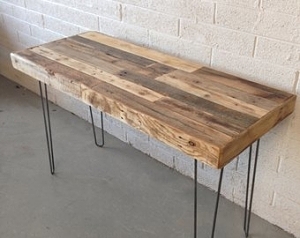

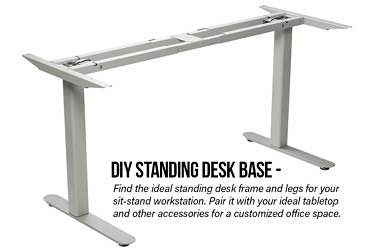
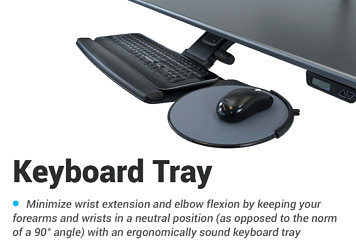
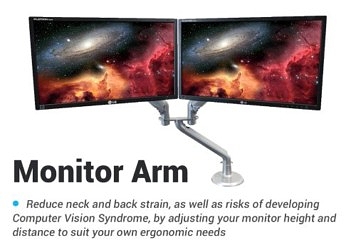
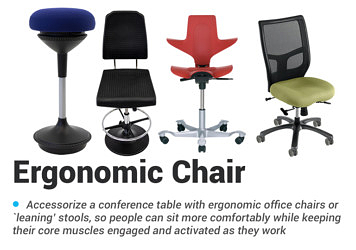
5 Comments
Leave a response >